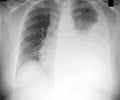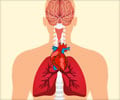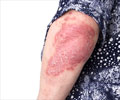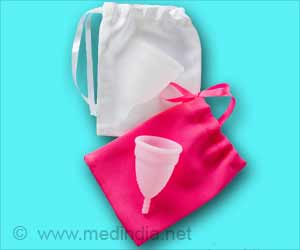Discover how a groundbreaking chip-based technology is transforming tuberculosis diagnosis, offering accurate and affordable detection and treatment.
- Industry-academia partnership develops a cheap, rapid, and accurate TB diagnostic test using chip-based technology
- Microfluidic lab-on-a-chip system captures and analyzes Mycobacterium tuberculosis bacilli for visual and molecular confirmation, revolutionizing sample processing
- Blinded screening of sputum samples demonstrates excellent concordance with culture diagnosis, paving the way for improved molecular detection and low-cost screening
A Novel Microfluidic Dielectrophoresis Technology to Enable Rapid Diagnosis of Mycobacteria tuberculosis in Clinical Samples
Go to source).
Advancing TB Diagnostics With a Breakthrough Chip-Based Technology
A unique industry-academia collaboration between the TB research team at St George's University of London's Institute for Infection and Immunity and QuantuMDx, a UK-based medical technology company, presented an opportunity to prioritize the development of a cheap, rapid, accurate, and portable TB diagnostic test to analyze sputum samples from suspected TB patients for Mycobacterium tuberculosis (Mtb). Lead investigator Philip D. Butcher, Ph.D., St George's, University of London, explained, "The global burden of TB is not improving. Although it is infectious, it is highly treatable. However, affordable diagnostics suitable for implementation at the point of care are needed to reach the 'missing millions.' Our TB research group at St George's has a longstanding appreciation of the global imperative for improved diagnostics for TB, and we realized that novel technologies may provide an answer. We saw an opportunity by collaborating on a new chip-based technology using dielectrophoresis to selectively isolate Mtb bacilli from sputum samples."CAPTURE-XT: A Breakthrough Microfluidic Lab-on-a-Chip System
The researchers describe a QuantuMDx CAPTURE-XT prototype microfluidic lab-on-a-chip system that can process solubilized sputum from suspected TB patients, capture Mtb bacilli for visual analysis (as a substitute for smear microscopy), and provide a purified sample for molecular confirmation via quantitative PCR (qPCR) and, eventually, genotypic drug-susceptibility analysis.CAPTURE-XT technology is based on the notion of dielectrophoresis, a little-used approach that may be tailored to attract or repel certain particles or cells based on their dielectric properties. In this situation, only the Mtb bacteria that cause tuberculosis are caught and concentrated, while the rest of the sputum is washed away.
CAPTURE-XT: Accurate and Efficient Sample Processing for TB Diagnosis
The performance of the prototype was assessed by a blinded screening of 100 defined and bio-banked sputum samples provided by the Foundation for Innovative New Diagnostics (FIND) after optimization using a panel of 50 characterized sputum samples.For smear-negative samples, the concordance with culture diagnosis was 100%, and for smear-positive samples, it was 87%. The high-burden sample concordance was 100% of the smear-positive samples. These findings show that the technique has the potential to deliver a powerful sample preparation tool that could serve as a front-end platform for better molecular detection. This adaptable technique could also be used as a visual detection diagnosis, possibly in conjunction with bacterial identification for low-cost screening.
Revolutionizing TB Diagnosis with CAPTURE-XT Technology
"The CAPTURE-XT technology is truly revolutionary and will have an impact on many different diseases from sepsis to oncology (circulating tumor cells). This application in Mtb is truly exceptional as its ultra-low cost and ultra-high sensitivity will profoundly improve equitable access to quality diagnoses for hundreds of millions of people," said Jonathan O'Halloran, Ph.D., founder and Chief Executive Officer of QuantuMDx Group. Ltd."This chip-based technology exploits the physiological property of the TB bacteria to be specifically collected onto the device so that small numbers can be visualized on the chip electrodes and act as a visual readout to replace the lab-based sputum smear/microscopic methods, which typically have low detection rates and require training laboratory staff, at molecular-like sensitivities and a fraction of the price. Moreover, when used as a front-end to downstream cellular, protein, and molecular devices, the possibilities are almost limitless."
Professor Butcher concluded, "Collaboration between university-based academic researchers and biotechnology industry scientists presents a way forward to develop new approaches for some of the world's greatest healthcare challenges, such as TB. This new chip-based technology could bring diagnostics to the patients that need it and also, by more accessible case-finding, prevent the further spread of this disease."
Co-author Heather Murton, Ph.D., LEX Diagnostics, Melbourn, UK, and formerly of QuantuMDx Group Ltd., said, "Tuberculosis is one of the oldest challenges faced in human healthcare. This technology has the potential to meet the expectations for a mobile TB diagnostic, and it is exciting to see a seemingly abstract physics principle successfully applied to a neglected disease area."
Global TB Crisis: Advancing Diagnostics for Better Detection and Treatment
TB is the 13th biggest cause of death worldwide and was the leading cause of death from a single infectious disease until COVID-19-more than malaria and HIV combined. Every year, it infects 10 million people and kills 1.4 million, with 230,000 of them being children.To combat antibiotic resistance and diagnosis of low-bacterial load patients, diagnostics with greater sensitivity and broader drug susceptibility testing are also required.
Reference:
- A Novel Microfluidic Dielectrophoresis Technology to Enable Rapid Diagnosis of Mycobacteria tuberculosis in Clinical Samples - (https://www.jmdjournal.org/article/S1525-1578(23)00098-3/fulltext)
Source-Medindia
















